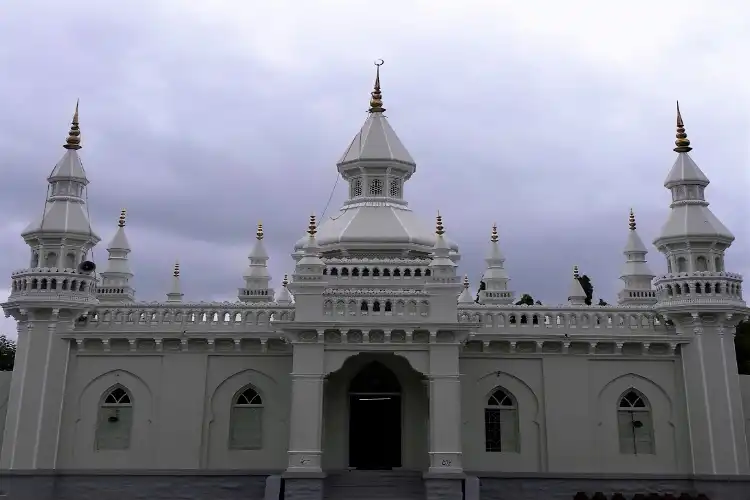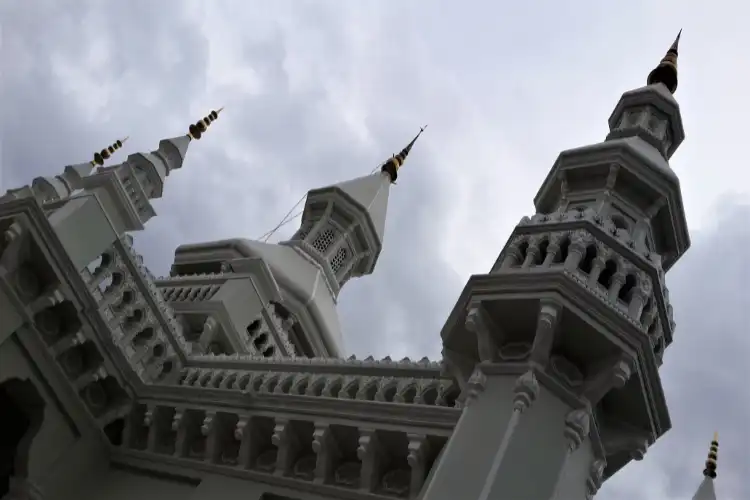Ratna G. Chotrani
Hyderabad is known for its monuments like the Charminar, the Golkonda Fort, or the Salar Jung museum while some grandiose structures of historic importance remain unnoticed even by avid travelers for some unknown reasons. The Spanish Mosque also known as Masjid Iqbal Ud Daula or Jam-e-Masjid Aiwan–e-Begumpet is one such place.The exterior and interior of the Spanish Mosque are mostly similar to the Cathedral-Mosque of Cordoba, Spain, and Jama Masjid of Gulbarga, Karnataka. Its unique and state-of-the-art interiors and architecture are fascinating.
According to the present proprietor, Faiz Khan – who is also a descendant of the family - the story of the Spanish Mosque and Begumpet dates back to 1896 when Nawab Vicarul Umra Bahadur, Prime Minister of Hyderabad and Amir-e-Paigah who lived in his fairy tale Falaknuma Palace, came up with the idea of building a conglomerate of seven palaces in the Cantonment town of Secunderabad. He chose his village of Begumpet for the project.
Faiz Khan said that the work on the Paigah or Begumpet palace began in 1897. The Begumpet palace had a private railway station from where Nawab Vicarul Umra Bahadur boarded the train for his jagir at Vikarabad, and Anandgiri hills, the town, which he founded, and later named after him.
Each palace in the conglomerate was different in architecture. Some showed European influence, the other Gothic, Roman, Moghul, or Deccani. The palace in which the present USA consulate is located in one of them.
During his visit to Europe in 1882, Nawab Vicarul Umra was the personal guest of Queen Victoria and other European royalty. He was inspired by the beautiful architecture there and, on his return, he decided to take an ambitious project – a palace more beautiful and almost a fairy tale palace, Hyderabad has never seen before - Falaknuma. He was also impressed by the beautiful Moorish influence in Spain and decided to build the Spanish mosque.
This architecture was new to Hyderabad; it was built on Seljuk architecture of the pre-Ottomans in Spain. This in turn was influenced by the plains of Anatolia, Turkey. Inside the mosque, we see the African influence in the northwest that is a mix of Hispanic, Tunis, and Moroccan architecture. The arches are of Hispanic Islamic architecture. Faiz Khan says, “We see this feature in Qurtuba mosque and other mosques in Africa. Such mosques are not seen even in the Middle East. The walls aRE scripted with Qur’anic verses in Florescu Kufi style of Arabic calligraphy.
The delicate and unique architechture of the Spanish mosque
Despite the story of the Spanish Mosque being based on the Great Mosque at Cordoba, even a cursory look at the two structures does not suggest imitation. Faiz Khan – who is also a descendant of the family – links the different elements of this mosque to Seljuk, northwest African Islamic apart from Hispanic- Islamic architecture borrowing also from Anatolia and Turkey. Qurtuba mosque and other mosques in Africa. Such mosques are not seen even in the Middle East. The walls are unscripted with Qur’anic verses in Florescu Kufi style of Arabic calligraphy.
The mosque is not topped by a bulbous dome, which has come to become a symbolic marker of an ‘Islamic’ construction. The building is entered through a porch, capped by eaves supported by brackets. The mihrab does not contain the lamp/symbol of Light, nor is it made in the image of the façade. It is three-faceted and contains minimal geometric patterns or Arabic inscriptions.
One can enter its innermost part through French windows topped by oval pointed arches, framed by five bays, in the style of the Cordoba mosque. It recently won the INTACH Heritage Award for Unusual Architectural Style. While the general program of the mosque concerning the placing of minarets, balconies, columns, and roof terraces follows Deccani influences, the Begumpet Spanish Mosque stands in a league of its own.
Recalls Faiz “I was three when I first visited the Spanish Mosque." The mosque was within the compound of the Begumpet or Paigah Palace. The nobility and the palace workers and some outsiders offered prayers there.
"Begumpet was free of traffic and in fact, only a few buildings dotted the skyline. It was so empty that one could see the minarets of the mosque from the Parade Grounds. A little distance away through the palace estate flowed the pristine Kallaveri stream emptying into the picturesque Hussainsagar lake touched high embankments of the Palace on the rear side. There was a bridge across the Kallaveri stream built by the Paigah engineers to connect the private Begumpet railway line which was on its other side, and it still stands today. It was one of the two connecting links between Hyderabad and Secunderabad, the other being the tank bund. Today the stream is polluted and serves as a drain” he recalls.
He recalls that the seven palaces of Begumpet sprawled over 1600 acres with imposing entrances of high wooden gates and grand gate posts on the three sides of the innermost compound wall. The way to the mosque was from inside the palace compound. I used to accompany my family members. The mosque was in white then. During the monsoon acres and acres of land was lush green around the mosque. It was a quiet old-world charm. There were only a few people from outside praying in the mosque. The post of imam those days was hereditary."


